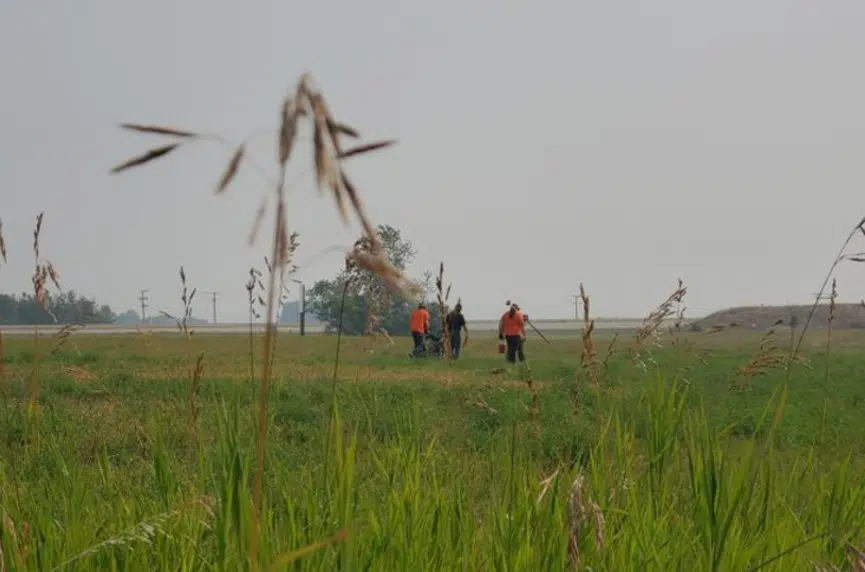Survivors, their families and friends gathered in Delmas Saturday at the site of the St. Henri Residential School.
The Battlefords Agency Tribal Chiefs (BATC) hosted local First Nations people, media and the general public, as crews from SNC Lavalin undergo a search for unmarked graves using ground penetrating radar. BATC announced their plans for the search in June.
A smudge ceremony was carried out for everyone stepping onto the site, with Elders and mental health counsellors on site for support. Elder Jenny Spyglass spoke of her time at the school and the pain that still lingers.
“This is where they took my culture away,” she said. “They took my language away from me. They took that love away from my mom. A two-or three-year-old girl would love to have their mom with them every day, every morning, feeding them, loving them. I didn’t have that, growing up.”
Spyglass said she was taken to the school when she was three and that her brother died of starvation there at age four. She urged young people to appreciate their parents and their family.
“I remember running up to my brothers and hugging them,” she said. “Just for hugging them, they locked me up. I remember sweating, crying until I fell asleep.”
“Be good to your parents and elders when you see them. We didn’t have that, I didn’t have that.”
The school was open from 1901-1948, when it was burned down. Several people in attendance expressed the belief that the school was burned down by students, as a response to the physical, emotional and psychological abuse Indigenous children had received.
Another Elder, Mary Bernadette Fineday said she was lucky to have avoided attending the school, but her parents had. She said they kept the full extent of their experiences from her when she asked about the school.
“I would ask [my mom] ‘what’s wrong’ and she would say ‘we were treated badly,’” Fineday said.
BATC board secretary Karen Whitecalf, who is the project lead on the ground searches, said she was grateful for the support of the land owners Doug Montgomery and Donna McBain.
“Just thankful that I approached them the way I did,” Whitecalf said. “She was more than willing to help us and allowed us to have access to the land and do the searches.”
“I’m grateful we can help in anyway,” Montgomery said during a press conference.
Whitecalf said she hopes having the search open to the public will result in more learning and understanding between communities. She and others that spoke Saturday expressed hope that healing can begin as a result.
“Our people knew that our children lay on these grounds, we always knew it,” she said. “But it was kept a secret. And what I feel is that we shouldn’t keep secrets anymore.”
The first site is expected to be finished by Sunday evening.











